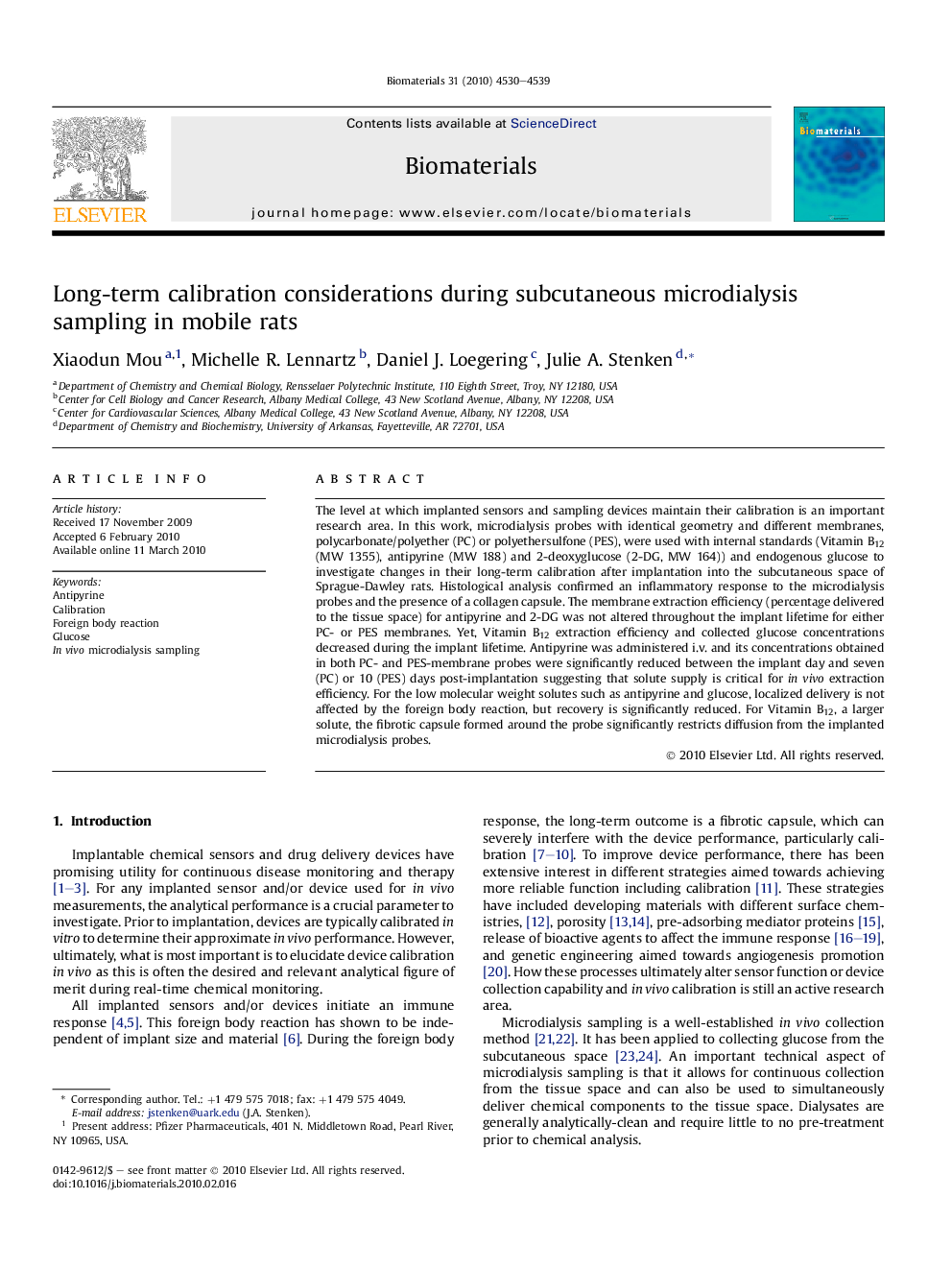| Article ID | Journal | Published Year | Pages | File Type |
|---|---|---|---|---|
| 9008 | Biomaterials | 2010 | 10 Pages |
The level at which implanted sensors and sampling devices maintain their calibration is an important research area. In this work, microdialysis probes with identical geometry and different membranes, polycarbonate/polyether (PC) or polyethersulfone (PES), were used with internal standards (Vitamin B12 (MW 1355), antipyrine (MW 188) and 2-deoxyglucose (2-DG, MW 164)) and endogenous glucose to investigate changes in their long-term calibration after implantation into the subcutaneous space of Sprague-Dawley rats. Histological analysis confirmed an inflammatory response to the microdialysis probes and the presence of a collagen capsule. The membrane extraction efficiency (percentage delivered to the tissue space) for antipyrine and 2-DG was not altered throughout the implant lifetime for either PC- or PES membranes. Yet, Vitamin B12 extraction efficiency and collected glucose concentrations decreased during the implant lifetime. Antipyrine was administered i.v. and its concentrations obtained in both PC- and PES-membrane probes were significantly reduced between the implant day and seven (PC) or 10 (PES) days post-implantation suggesting that solute supply is critical for in vivo extraction efficiency. For the low molecular weight solutes such as antipyrine and glucose, localized delivery is not affected by the foreign body reaction, but recovery is significantly reduced. For Vitamin B12, a larger solute, the fibrotic capsule formed around the probe significantly restricts diffusion from the implanted microdialysis probes.
